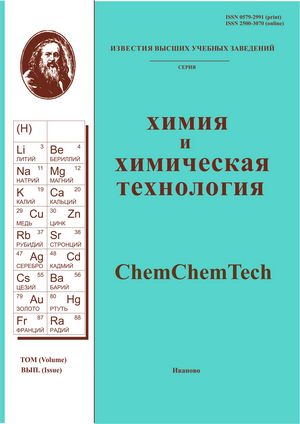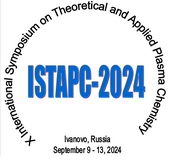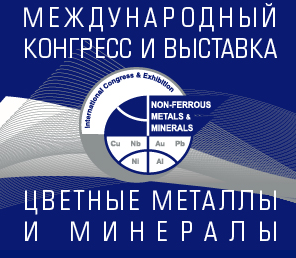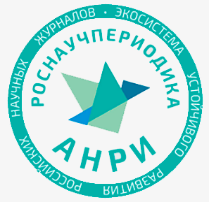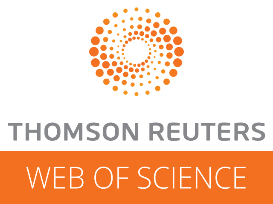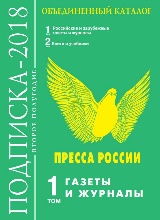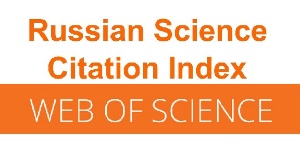ПЛАЗМЕННО-РАСТВОРНАЯ ОБРАБОТКА ПРИРОДНЫХ ПОЛИМЕРНЫХ МАТЕРИАЛОВ
Аннотация
Неравновесная низкотемпературная плазма атмосферного давления является высоко реакционноспособной средой, которая позволяет модифицировать природные материалы экологическим способом. В данной работе рассматривается область плазменно-растворной модификации материалов на основе полимеров, полученных из природных источников. Рассмотрены типы плазменно-растворных систем с точки зрения эффективности генерации активных частиц, их транспорта и взаимодействия с макромолекулами. Регулируемая модификация растений (береза, ива, побеги бамбука и винограда; ячмень, рис и солома рапса, многолетние травы), водорослей, побочных продуктов растительного происхождения и отходов (опилки, лубяные волокна, ореховые скорлупы, семена, кожура, жмых и выжимки), полимеров растительного происхождения (целлюлоза, гемицеллюлоза, лигнин, крахмал, альгинат натрия) и материалов на основе полимеров животного происхождения (хитозан, коллаген, желатин) путем плазменной обработки в растворе сравнивается с традиционными химическими методами. Также рассматривается синтез нанобиокомпозитов с расширенными функциональными возможностями.
<span style="opacity: 0;"> . . . . . . . . . . . . . . . . . . . . . . . . . . . . . . . . . . . . . . . . . . . </span><span style="opacity: 0;"> . . . . . . . . . . . . . . . . . . . . . . . . . . . . . . . . . . . . . . . . . . . </span>
Литература
Kvavadze E., Bar-Yosef O., Belfer-Cohen A., Boaretto E., Jakeli N., Matskevich Z., Meshveliani T. 30,000-Year-Old Wild Flax Fi-bers. Science. 2009. V. 325. P. 1359. DOI: 10.1126/science.1175404.
Tallet P., Ayn Sukhna, Wadi el-Jarf. Two newly discovered phar-aonic harbours on the Suez Gulf. Br. Museum Stud. Anc. Egypt Su-dan. 2012. V. 18. P. 147–168.
Vainker S.J. Chinese Silk: A Cultural History. British Museum Press. 2004. 224 p.
Russo E.B. History of Cannabis and Its Preparations in Saga, Science, and Sobriquet. Chem. Biodivers. 2007. V. 4. P. 1614–1648. DOI: 10.1002/cbdv.200790144.
Andersen S.R., Geertinger P. Bog Bodies Investigated in the Light of Forensic Medicine. J. Danish Archaeol. 1984. V. 3. P. 111–119. DOI: 10.1080/0108464X.1984.10589916.
Revedin A., Aranguren B., Becattini R., Longo L., Marconi E., Lippi M. M., Skakun N., Sinitsyn A., Spiridonova E., Svoboda J. Thirty thousand-year-old evidence of plant food processing. Proc. Natl. Acad. Sci. 2010. V. 107. P. 18815–18819. DOI: 10.1073/pnas.1006993107.
Needham J., Tsuen-Hsuin T. Chemistry and Chemical Technology, Part 1, Paper and Printing. Science and Civilisation in China. V. 5. Chemistry and Chemical Technology. Cambridge University Press. 1985. 504 p.
Resolution adopted by the General Assembly on 20 December 2006. Oxford University Press. V. 61.N 180. P. 1-4.
Discover Natural Fibres Initiative http://dnfi.org.
Höcker H. Plasma treatment of textile fibers. Pure Appl. Chem. 2002. V. 74. P. 423–427. DOI: 10.1351/pac200274030423.
Kan C.W., Yuen C.W.M., Tsoi W.Y.I., Tang T.B. Plasma Pretreatment for Polymer Deposition—Improving Antifelting Properties of Wool. IEEE Trans. Plasma Sci. 2010. V. 38. P. 1505–1511. DOI: 10.1109/TPS.2010.2046338.
Danish N., Garg M.K., Rane R.S., Jhala P.B., Nema S.K. Surface modification of Angora rabbit fibers using dielectric barrier discharge. Appl. Surf. Sci. 2007. V. 253. P. 6915–6921. DOI: 10.1016/j.apsusc.2007.02.015.
Nema S.K., Jhala P.B. Plasma technologies for textile and apparel. New Delhi: Woodhead Publishing India Pvt. Ltd. 2014. 382 p.
Barra B., Paulo B., Alves Junior C., Savastano Junior H., Ghavami K. Effects of Methane Cold Plasma in Sisal Fibers. Key Eng. Mater. 2012. V. 517. P. 458–468. DOI: 10.4028/www.scientific.net/KEM.517.458.
Kan C.W., Yuen C.W.M. Effect of atmospheric pressure plasma treatment on wettability and dryability of synthetic textile fibres. Surf. Coatings Technol. 2013. V. 228. P. S607–S610. DOI: 10.1016/j.surfcoat.2011.10.061.
Ibrahim N.A., Eid B.M., Abdel-Aziz M.S. Effect of plasma superficial treatments on antibacterial functionalization and coloration of cellulosic fabrics. Appl. Surf. Sci. 2017. V. 392. P. 1126–1133. DOI: 10.1016/j.apsusc.2016.09.141.
Maksimov A.I. Vacuum-plasma and plasma-solution modification of macromolecular compounds. Potentials and limitations. Fibre Chem. 2004. V. 36. P. 333–337. DOI: 10.1007/s10692-005-0004-x.
Lane T. XLIV. Description of an electrometer invented by Mr. Lane; with an account of some experiments made by him with it: In a letter to Benjamin Franklin, LL. D. F. R. S. Philos. Trans. R. Soc. London. 1767. 57. P. 451–460. DOI: 10.1098/rstl.1767.0046.
Singer G.J., Crosse A. XXXI. Account of some electrical experiments by M. De Nelis , of malines in the Netherlands: with an extension of them. Philos. Mag. 1815. 46. P. 161–166. DOI: 10.1080/14786441508638517.
Frungel F. Zum mechanischen wirkungsgrad von flussigkeitsfunken. Optik. 1948. 3. 124–127 (in German).
Yutkin L.A. Electrohydraulic Effect. Defense Technical Information Center. 1961. 174 p. DOI: 10.21236/AD0267722.
Gubkin J. Electrolytische Metallabscheidung an der freien Oberfläche einer Salzlösung. Ann. der Phys. und Chemie. 1887. 268. P. 114–115 (in German). DOI: 10.1002/andp.18872680909.
Hickling A., Ingram M.D. Contact glow-discharge electrolysis. Trans. Faraday Soc. 1964. V. 60. P. 783. DOI: 10.1039/tf9646000783.
COST Action TD1208 http://www.cost-plasma-liquids.eu.
Takai O. Solution plasma processing (SPP). Pure Appl. Chem. 2008. V. 80. P. 2003–2011. DOI: 10.1351/pac200880092003.
Titov V.A., Rybkin V.V., Smirnov S.A., Kulentsan A.N., Choi H.-S. Experimental and Theoretical Studies on the Characteristics of Atmospheric Pressure Glow Discharge with Liquid Cathode. Plasma Chem. Plasma Proc. 2006. V. 26. P. 543–555. DOI: 10.1007/s11090-006-9014-6.
Bruggeman P., Liu J., Degroote J., Kong M.G., Vierendeels J., Leys C. Dc excited glow discharges in atmospheric pressure air in pinto-water electrode systems. J. Phys. D. Appl. Phys. 2008. V. 41. P. 215201. DOI: 10.1088/0022-3727/41/21/215201.
Prola L.D.T., Acayanka E., Lima E.C., Umpierres C.S., Vaghetti J.C.P., Santos W.O., Laminsi S., Djifon P.T. Comparison of Jatropha curcas shells in natural form and treated by non-thermal plasma as biosorbents for removal of Reactive Red 120 textile dye from aqueous solution. Ind. Crops Prod. 2013. V. 46. P. 328–340. DOI: 10.1016/j.indcrop.2013.02.018.
Takam B., Acayanka E., Kamgang G.Y., Pedekwang M.T., Laminsi S. Enhancement of sorption capacity of cocoa shell biomass modified with non-thermal plasma for removal of both cationic and anionic dyes from aqueous solution. Environ. Sci. Pollut. Res. 2017. V. 24. P. 16958–16970. DOI: 10.1007/s11356-017-9328-3.
Molina R., Jovancic P., Vilchez S., Tzanov T., Solans C. In situ chitosan gelation initiated by atmospheric plasma treatment. Carbo-hydr. Polym. 2014. V. 103. P. 472–479. DOI: 10.1016/j.carbpol.2013.12.084.
Molina R., Gómez M., Kan C.W., Bertran E. Hydrophilic-oleophobic coatings on cellulosic materials by plasma assisted polymerization in liquid phase and fluorosurfactant complexation. Cellulose. 2014. V. 21. P. 729–739. DOI: 10.1007/s10570-013-0131-0.
Nakajima A., Uchida G., Kawasaki T., Koga K., Sarinont T., Amano T., Takenaka K., Shiratani M., Setsuhara Y. Effects of gas flow on oxidation reaction in liquid induced by He/O2 plasma-jet irra-diation. J. Appl. Phys. 2015. V. 118. P. 043301. DOI: 10.1063/1.4927217.
Kawasaki T., Kusumegi S., Kudo A., Sakanoshita T., Tsurumaru T., Sato A. Effects of Gas Flow Rate on Supply of Reactive Oxygen Species into a Target Through Liquid Layer in Cold Plasma Jet. IEEE Trans. Plasma Sci. 2016. V. 44. P. 3223–3229. DOI: 10.1109/TPS.2016.2628872.
Maximov A.I. Physics, chemistry and applications of the AC diaphragm discharge and related discharges in electro-lyte solutions. Contrib. Plasma Phys. 2007. V. 47. P. 111–118. DOI: 10.1002/ctpp.200710016.
Barba F.J., Zhu Z., Koubaa M., Sant’Ana A.S., Orlien V. Green alternative methods for the extraction of antioxidant bioactive compounds from winery wastes and by-products: A review. Trends Food Sci. Technol. 2016. V. 49. P. 96–109. DOI: 10.1016/j.tifs.2016.01.006.
Khlyustova A., Sirotkin N., Evdokimova O., Prysiazhnyi V., Titov V. Efficacy of underwater AC diaphragm discharge in generation of reactive species in aqueous solutions. J. Electrostat. 2018. V. 96. P. 76–84. DOI: 10.1016/j.elstat.2018.10.002.
Takai O. Fundamentals and Applications of Solution Plasma. J. Photopolym. Sci. Technol. 2014. V. 27. P. 379–384. DOI: 10.2494/photopolymer.27.379.
Bruggeman P., Leys C. Non-thermal plasmas in and in contact with liquids. J. Phys. D. Appl. Phys. 2009. V. 42. P. 053001. DOI: 10.1088/0022-3727/42/5/053001.
Bruggeman P. J., Kushner M. J., Locke B. R., Gardeniers J. G. E., Graham W. G., Graves D. B., Hofman-Caris R. C. H. M., Maric D., Reid J. P., Ceriani E., Fernandez Rivas D., Foster J. E., Garrick S. C., Gorbanev Y., Hamaguchi S., Iza F., Jablonowski H., Klimova E., Kolb J., Krcma F., Lukes P., Machala Z., Mari-nov I., Mariotti D., Mededovic Thagard S., Minakata D., Neyts E. C., Pawlat J., Petrovic Z. L., Pflieger R., Reuter S., Schram D. C., Schröter S., Shiraiwa M., Tarabová B., Tsai P. A., Verlet J. R. R., von Woedtke T., Wilson K. R., Yasui K., Zvereva G. Plasma–liquid interactions: a review and roadmap. Plasma Sources Sci. Tech-nol. 2016. V. 25. P. 053002. DOI: 10.1088/0963-0252/25/5/053002.
Yutkin L.A., Goltsova L.I. Сertificate of authorship N221479 (USSR) The method of destruction of cell structures of plant and an-imal tissues. USSR. 1983. (in Russian). Юткин Л.А., Гольцова Л.И. Патент №221479 (CCCР) Способ разрушения клеточных структур растительных и животных тканей. 1983.
Yutkin L.A., Goltsova L.I. Сertificate of authorship N469275 (USSR) The method of the Preparation of Fodder. USSR. 1983. (in Russian). Юткин Л.А., Гольцова Л.И. Патент №469275 (CCCР) Способ подготовки кормов, преимущественно грубых. 1983.
Yutkin L.A. Elektrogidravlicheskij effekt. M.: Mashinostrojenie. 1986. 251 p. (in Russian). Юткин Л.А. Электрогидравлический эффект. М.: Машиностроение. 1986. 251 c.
Rajha H.N., Boussetta N., Louka N., Maroun R.G., Vorobiev E. A comparative study of physical pretreatments for the extraction of polyphenols and proteins from vine shoots. Food Res. Int. 2014. V. 65. P. 462–468. DOI: 10.1016/j.foodres.2014.04.024.
Rajha H.N., Boussetta N., Louka N., Maroun R.G., Vorobiev E. Effect of alternative physical pretreatments (pulsed electric field, high voltage electrical discharges and ultrasound) on the dead-end ultrafiltration of vine-shoot extracts. Sep. Purif. Technol. 2015. V. 146. P. 243–251. DOI: 10.1016/j.seppur.2015.03.058.
Rajha H.N., Boussetta N., Louka N., Maroun R.G., Vorobiev E. Electrical, mechanical, and chemical effects of high-voltage electrical discharges on the polyphenol extraction from vine shoots. Innov. Food Sci. Emerg. Technol. 2015. V. 31. P. 60–66. DOI: 10.1016/j.ifset.2015.07.006.
Rajha H.N., El Kantar S., Afif C., Boussetta N., Louka N., Maroun R.G., Vorobiev E. Selective multistage extraction process of biomolecules from vine shoots by a combination of biological, chemical, and physical treatments. Comptes Rendus Chim. 2018. V. 21. P. 581–589. DOI: 10.1016/j.crci.2018.02.013.
Brianceau S., Turk M., Vitrac X., Vorobiev E. High voltage electric discharges assisted extraction of phenolic compounds from grape stems: Effect of processing parameters on flavan-3-ols, flavonols and stilbenes recovery. Innov. Food Sci. Emerg. Technol. 2016. V. 35. P. 67–74. DOI: 10.1016/j.ifset.2016.04.006.
Brahim M., El Kantar S., Boussetta N., Grimi N., Brosse N., Vorobiev E. Delignification of rapeseed straw using innovative chemo-physical pretreatments. Biomass and Bioenergy. 2016. V. 95. P. 92–98. DOI: 10.1016/j.biombioe.2016.09.019.
Brahim M., Boussetta N., Grimi N., Vorobiev E., Brosse N. Innovative physicallyassisted soda fractionation of rapeseed hulls for better recovery of biopolymers. RSC Adv. 2016. V. 6. P. 19833–19842. DOI: 10.1039/C5RA27548B.
Brahim M., Checa Fernandez B.L., Regnier O., Bousset-ta N., Grimi N., Sarazin C., Husson E., Vorobiev E., Brosse N. Impact of ultrasounds and high voltage electrical discharges on physico-chemical properties of rapeseed straw’s lignin and pulps. Bioresour. Technol. 2017. V. 237. P. 11–19. DOI: 10.1016/j.biortech.2017.04.003.
Zhou R., Zhou R., Wang S., Lan Z., Zhang X., Yin Y., Tu S., Yang S., Ye L. Fast liquefaction of bamboo shoot shell with liquid-phase microplasma assisted technology. Bioresour. Technol. 2016. V. 218. P. 1275–1278. DOI: 10.1016/j.biortech.2016.07.042.
Xi D., Jiang C., Zhou R., Fang Z., Zhang X., Liu Y., Luan B., Feng Z., Chen G., Chen Z., Liu Q., Yang S. The universality of lignocellulosic biomass liquefaction by plasma electrolysis under acidic conditions. Bioresour. Technol. 2018. V. 268. P. 531–538. DOI: 10.1016/j.biortech.2018.08.025.
Gao J., Chen L., Zhang J., Yan Z. Improved enzymatic hydrolysis of lignocellulosic biomass through pretreatment with plasma electrolysis. Bioresour. Technol. 2014. V. 171. P. 469–471. DOI: 10.1016/j.biortech.2014.07.118.
Koubaa M., Roselló-Soto E., Šic Žlabur J., Režek Jambrak A., Brnčić M., Grimi N., Boussetta N., Barba F.J. Current and New Insights in the Sustainable and Green Recovery of Nutritionally Valuable Compounds from Ste-via rebaudiana Bertoni. J. Agric. Food Chem. 2015. V. 63. P. 6835–6846. DOI: 10.1021/acs.jafc.5b01994.
Barba F.J., Grimi N., Vorobiev E. Evaluating the potential of cell disruption technologies for green selective extraction of antioxidant compounds from Stevia rebaudiana Bertoni leaves. J. Food Eng. 2015. V. 149. P. 222–228. DOI: 10.1016/j.jfoodeng.2014.10.028.
Carbonell-Capella J.M., Šic Žlabur J., Rimac Brnčić S., Barba F.J., Grimi N., Koubaa M., Brnčić M., Vorobiev E. Electrotechnologies, microwaves, and ultrasounds combined with binary mix-tures of ethanol and water to extract steviol glycosides and antioxidant compounds from Stevia rebaudiana leaves. J. Food Process. Preserv. 2017. V. 41. P. e13179. DOI: 10.1111/jfpp.13179.
Wright A., Bandulasena H., Ibenegbu C., Leak D., Holmes T., Zimmerman W., Shaw A., Iza F. Dielectric barrier discharge plasma microbubble reactor for pretreatment of lignocellulosic biomass. AIChE J. 2018.V. 64. P. 3803–3816. DOI: 10.1002/aic.16212.
Grimi N., Dubois A., Marchal L., Jubeau S., Lebovka N.I., Voro-biev E. Selective extraction from microalgae Nannochloropsis sp. us-ing different methods of cell disruption. Bioresour. Technol. 2014. V. 153. P. 254–259. DOI: 10.1016/j.biortech.2013.12.011.
Nisol B., Watson S., Leblanc Y., Moradinejad S., Wertheimer M. R., Zamyadi A. Cold plasma oxidation of harmful algae and associated metabolite BMAA toxin in aqueous suspension. Plasma Process. Polym. 2018. P. 1800137. DOI: 10.1002/ppap.201800137.
Ju T., Deng Y., Xi J. Optimization of Circulating Extraction of Polysaccharides from Gracilaria Lemaneiformis Using Pulsed Electrical Discharge. ACS Sustain. Chem. Eng. 2019. DOI: 10.1021/acssuschemeng.8b06183.
Mikula M., Panák J., Dvonka V. The destruction effect of a pulse discharge in water suspensions. Plasma Sources Sci. Technol. 1997. V. 6. P. 179–184. DOI: 10.1088/0963-0252/6/2/011.
Bagrovskaya N.A., Nikiforova T.E., Kozlov V.A., Lilin S.A. Sorp-tion properties of cellulose-containing material modified in plasma–solution system. Prot. Met. Phys. Chem. Surf. 2010. V. 46. P. 692–696. DOI: 10.1134/S2070205110060110.
Xi D., Zhou R., Zhou R., Zhang X., Ye L., Li J., Jiang C., Chen Q., Sun G., Liu Q., Yang S. Mechanism and optimization for plasma electrolytic liquefaction of sawdust. Bioresour. Technol. 2017. V. 241. P. 545–551. DOI: 10.1016/j.biortech.2017.05.132.
Bledzki A. K., Gassan J. Einfluß von haftvermittlern auf das feuchteverhalten naturfaserverstärkter kunststoffe. Angew. Makromol. Chemie. 1996. V. 236. P. 129–138 (in German). DOI: 10.1002/apmc.1996.052360110.
Bledzki A. Composites reinforced with cellulose based fibres. Prog. Polym. Sci. 1999. V. 24. P. 221–274. DOI: 10.1016/S0079-6700(98)00018-5.
Summerscales J., Dissanayake N.P.J., Virk A.S., Hall W. A review of bast fibres and their composites. Part 1 – Fibres as reinforcements. Compos. Part A. Appl. Sci. Man-uf. 2010. V. 41. P. 1329–1335. DOI: 10.1016/j.compositesa.2010.06.001.
Fan M., Weclawski B. Long natural fibre composites. Advanced High Strength Natural Fibre Composites in Construction: Elsevier. 2017. P. 141–177. DOI: 10.1016/B978-0-08-100411-1.00006-6.
Maksimov A.I., Nikiforov A.Y. Comparison of plasma and plasma-solution modifications of polymer materials in the liquid phase. High Energy Chem. 2007. V. 41. P. 454–459. DOI: 10.1134/S0018143907060124.
Titova Y.V., Stokozenko V.G., Konycheva M.V., Maxi-mov A.I. Delignification of bast fibers under plasma-solution treatment. Izv. Vyssh. Uchebn. Zaved. Khim. Khim.Tekhnol. 2009. V. 52. N 7. P. 110–113 (in Russian).
Titova Y.V., Stokozenko V.G., Maximov A.I. Applica-tion of plasma-solution treatment for modification of bast fibers. Surf. Eng. Appl. Electrochem. 2009. V. 45. P. 16–20. DOI: 10.3103/S1068375509010037.
Titov V.A., Stokozenko V.G., Titov Y.V, Moryganov A.P. Pulping of flax raw materials using plasma-chemical treatment. High Energy Chem. 2015. V. 49. P. 459–464. DOI: 10.1134/S0018143915050148.
Maksimov V.V. Сertificate of authorship RU2233355C1 Flax Fiber Processing Method. Russian Federation: Federal Service for Intellectual Property, Patents and Trademarks. 2004.
Maksimov V.V., Nusenbaum V.D. Сertificate of authorship RU2280720C1 Method of Treatment of Bast Fiber Materials. Rus-sian Federation: Federal Service for Intellectual Property, Patents and Trademarks. 2006.
Bubnov G.G., Zakharov V.N., Zubov F.V., Semenov A.V. Treatment Method of Bast-Fibered Materials. Russian Federation: Federal Service for Intellectual Property, Patents and Trademarks. 2009.
Maksimov V.V. Сertificate of authorship WO 2016/024880 Bast-Fiber Material Processing Method. 2017.
Wu L., Shang Z., Chen S., Tu J., Kobayashi N., Li Z. Raw walnut shell modified by non-thermal plasma in ultrafine water mist for ad-sorptive removal of Cu(II) from aqueous solution. RSC Adv. 2018. V. 8. P. 21993–22003. DOI: 10.1039/C8RA03271H.
Yan L.-G., Deng Y., Ju T., Wu K., Xi J. Continuous high voltage electrical discharge extraction of flavonoids from peanut shells based on “annular gap type” treatment chamber. Food Chem. 2018. V. 256. P. 350–357. DOI: 10.1016/j.foodchem.2018.02.129.
Gros C., Lanoisellé J.-L., Vorobiev E. Towards an Alternative Extraction Process for Linseed Oil. Chem. Eng. Res. Des. 2003. V. 81. P. 1059–1065. DOI: 10.1205/026387603770866182.
Liu D., Vorobiev E., Savoire R., Lanoisellé J.-L. Intensification of polyphenols extraction from grape seeds by high voltage electrical discharges and extract concentration by deadend ultrafiltration. Sep. Purif. Technol. 2011. V. 81. P. 134–140. DOI: 10.1016/j.seppur.2011.07.012.
Boussetta N., Vorobiev E., Le L.H., Cordin-Falcimaigne A., Lanoisellé J.-L. Application of electrical treatments in alcoholic solvent for polyphenols extraction from grape seeds. LWT - Food Sci. Technol. 2012. V. 46. P. 127–134. DOI: 10.1016/j.lwt.2011.10.016.
Sarkis J.R., Boussetta N., Tessaro I.C., Marczak L.D.F., Vorobiev E. Application of pulsed electric fields and high voltage electrical discharges for oil extraction from sesame seeds. J. Food Eng. 2015. V. 153. P. 20–27. DOI: 10.1016/j.jfoodeng.2014.12.003.
Parniakov O., Roselló-Soto E., Barba F.J., Grimi N., Lebovka N., Vorobiev E. New approaches for the effective valorization of papa-ya seeds: Extraction of proteins, phenolic compounds, carbohydrates, and isothiocyanates assisted by pulsed electric energy. Food Res. Int. 2015. V. 77. P. 711–717. DOI: 10.1016/j.foodres.2015.03.031.
Barba F.J., Boussetta N., Vorobiev E. Emerging technologies for the recovery of isothiocyanates, protein and phenolic compounds from rapeseed and rapeseed presscake: Effect of high voltage electrical discharges. Innov. Food Sci. Emerg. Technol. 2015. V. 31. P. 67–72. DOI: 10.1016/j.ifset.2015.06.008.
Parniakov O., Barba F.J., Grimi N., Lebovka N., Vorobiev E. Impact of pulsed electric fields and high voltage electrical discharges on extraction of high-added value compounds from papaya peels. Food Res. Int. 2014. V. 65. P. 337–343. DOI: 10.1016/j.foodres.2014.09.015.
Parniakov O., Barba F. J., Grimi N., Lebovka N., Vorobiev E. Extraction assisted by pulsed electric energy as a potential tool for green and sustainable recovery of nutritionally valuable compounds from mango peels. Food Chem. 2016. V. 192. P. 842–848. DOI: 10.1016/j.foodchem.2015.07.096.
Xi J., He L., Yan L. Continuous extraction of phenolic compounds from pomegranate peel using high voltage electrical discharge. Food Chem. 2017. V. 230. P. 354–361. DOI: 10.1016/j.foodchem.2017.03.072.
El Kantar S., Boussetta N., Rajha H. N., Maroun R. G., Louka N., Vorobiev E. High voltage electrical discharges combined with enzymatic hydrolysis for extraction of polyphenols and fermentable sugars from orange peels. Food Res. Int. 2018. V. 107. P. 755–762. DOI: 10.1016/j.foodres.2018.01.070.
Roselló-Soto E., Barba F. J., Parniakov O., Galanakis C. M., Lebovka N., Grimi N., Vorobiev E. High Voltage Electrical Dis-charges, Pulsed Electric Field, and Ultrasound Assisted Extraction of Protein and Phenolic Compounds from Olive Kernel. Food Bioprocess Technol. 2015. V. 8. P. 885–894. DOI: 10.1007/s11947-014-1456-x.
Roselló-Soto E., Koubaa M., Moubarik A., Lopes R.P., Saraiva J.A., Boussetta N., Grimi N., Barba F.J. Emerging opportunities for the effective valorization of wastes and by-products generated during olive oil production process: Non-conventional methods for the recovery of high-added value compounds. Trends Food Sci. Technol. 2015. V. 45. P. 296–310. DOI: 10.1016/j.tifs.2015.07.003.
Boussetta N., Lanoisellé J.L., Bedel-Cloutour C., Vorobiev E. Extraction of soluble matter from grape pomace by high voltage electrical discharges for polyphenol recovery: Effect of sulphur dioxide and thermal treatments. J. Food Eng. 2009. 95. P. 192–198. DOI: 10.1016/j.jfoodeng.2009.04.030.
Boussetta N., Lebovka N., Vorobiev E., Adenier H., Bedel-Cloutour C., Lanoisellé J.-L. Electrically Assisted Extraction of Soluble Matter from Chardonnay Grape Skins for Polyphenol Recovery. J. Agric. Food Chem. 2009. V. 57. P. 1491–1497. DOI: 10.1021/jf802579x.
Boussetta N., Vorobiev E., Deloison V., Pochez F., Falcimaigne-Cordin A., Lanoisellé J.-L. Valorisation of grape pomace by the extraction of phenolic antioxidants: Application of high voltage electrical discharges. Food Chem. 2011. V. 128. P. 364–370. DOI: 10.1016/j.foodchem.2011.03.035.
Boussetta N., Vorobiev E., Reess T., De Ferron A., Pecastaing L., Ruscassié R., Lanoisellé J.-L. Scaleup of high voltage electrical discharges for polyphenols extraction from grape pomace: Effect of the dynamic shock waves. Innov. Food Sci. Emerg. Technol. 2012. V. 16. P. 129–136. DOI: 10.1016/j.ifset.2012.05.004.
Boussetta N., Turk M., De Taeye C., Larondelle Y., Lanoisellé J.L., Vorobiev E. Effect of high voltage electrical discharges, heating and ethanol concentration on the extraction of total polyphenols and lignans from flaxseed cake. Ind. Crops Prod. 2013. V. 49. P. 690–696. DOI: 10.1016/j.indcrop.2013.06.004.
Barba F.J., Brianceau S., Turk M., Boussetta N., Vorobiev E. Effect of Alternative Physical Treatments (Ultrasounds, Pulsed Electric Fields, and High-Voltage Electrical Discharges) on Selective Recovery of Bio-compounds from Fermented Grape Pomace. Food Bioprocess Technol. 2015. V. 8. P. 1139–1148. DOI: 10.1007/s11947-015-1482-3.
Sarkis J.R., Boussetta N., Blouet C., Tessaro I.C., Marczak L.D.F., Vorobiev E. Effect of pulsed electric fields and high voltage electrical discharges on polyphenol and protein extraction from sesame cake. Innov. Food Sci. Emerg. Technol. 2015. V. 29. P. 170–177. DOI: 10.1016/j.ifset.2015.02.011.
Deng Y., Ju T., Xi J. Circulating Polyphenols Extraction System with High-Voltage Electrical Discharge: Design and Performance Evaluation. ACS Sustain. Chem. Eng. 2018. V. 6. P. 15402–15410. DOI: 10.1021/acssuschemeng.8b03827.
Souto F., Calado V., Pereira N. Ligninbased carbon fiber: a current overview. Mater. Res. Express. 2018. V. 5. P. 072001. DOI: 10.1088/2053-1591/aaba00.
Fedorishcheva I.P., Khilenko N.I., Vozhzhannikov V.N., Pirogov V.N. Method of increasing the accessibility of cellulose to acetylation. J. Appl. Chem. USSR. 1973. V. 46. P. 2688.
Prasertsung I., Chutinate P., Watthanaphanit A., Saito N., Damrongsakkul S. Conversion of cellulose into reducing sugar by solution plasma process (SPP). Carbohydr. Polym. 2017. V. 172. P. 230–236. DOI: 10.1016/j.carbpol.2017.05.025.
Wright A., Marsh A., Ricciotti F., Shaw A., Iza F., Holdich R., Bandulasena H. Microbubble-enhanced dielectric barrier discharge pretreatment of microcrystalline cellulose. Biomass and Bioenergy. 2018. V. 118. P. 46–54. DOI: 10.1016/j.biombioe.2018.08.005.
Titova Y.V., Voronova M. I., Maksimov A. I. Influence of gas-discharge plasma treatment in the electrolyte bulk on the cellulose properties. Russ. J. Appl. Chem. 2008. V. 81. P. 854–857. DOI: 10.1134/S107042720805025X.
Surov O.V., Voronova M.I., Rubleva N.V., Kuzmicheva L.A., Nikitin D., Choukourov A., Titov V.A., Zakharov A.G. A novel effective approach of nanocrystalline cellulose production: oxida-tion–hydrolysis strategy. Cellulose. 2018. V. 25. P. 5035–5048. DOI: 10.1007/s10570-018-1910-4.
Zheleznov K.N., Maximov A.I. The influence of plasma-solution treatment on the electrokinetic properties of pow-der cellulose. Mendeleev Commun. 2005. 15. P. 214–215. DOI: 10.1070/MC2005v015n05ABEH002121.
Nikiforov A.Y., Leys C. Surface treatment of cotton yarn by under-water capillary electrical discharge. Plasma Chem. Plasma Process. 2006. V. 26. P. 415–423. DOI: 10.1007/s11090-006-9021-7.
Pavliňák D., Švachová V., Vojtek L., Zarzycká J., Hyršl P., Alber-ti M., Vojtová L. Plasma-chemical modifications of cellulose for biomedical applications. Open Chem. 2015. V. 13. P. 229–235. DOI: 10.1515/chem-2015-0030.
Panaitescu D.M., Vizireanu S., Nicolae C.A., Frone A.N., Casarica A., Carpen L.G., Dinescu G. Treatment of nanocellulose by submerged liquid plasma for surface functionalization. Nanomaterials. 2018. V. 8. P. 467. DOI: 10.3390/nano8070467.
Vizireanu S., Panaitescu D.M., Nicolae C.A., Frone A.N., Chiulan I., Ionita M.D., Satulu V., Carpen L.G., Petrescu S., Birjega R., Dinescu G. Cellulose defibrillation and functionalization by plasma in liquid treatment. Sci. Rep. 2018. V. 8. P. 1–14. DOI: 10.1038/s41598-018-33687-2.
Furukawa S., Inoue N., Ishioka T., Furuya K., Harata A. Rapid decomposition of cellulose dissolved in ionic liquid using gas-liquid interface discharge. Jpn. J. Appl. Phys. 2012. V. 51. P. 51–53. DOI: 10.1143/JJAP.51.070205.
Watthanaphanit A., Lee H., Saito N. Cellulose conversion to sugar alcohol by solution plasma processing. Mater. Res. Soc. Symp. Proc. 2015. V. 1745. P. 22–27. DOI: 10.1557/opl.2015.787.
Wang Y., Yuan B., Ji Y., Li H. Hydrolysis of hemicellulose to produce fermentable monosaccharides by plasma acid. Carbohydr. Polym. 2013. V. 97. P. 518–522. DOI: 10.1016/j.carbpol.2013.05.017.
Rahim I., Nomura S., Mukasa S., Toyota H., Kawanishi K., Makiura Y., Kogoh K., Ohshima K., Katsuen S. Fuel Gas Production from Biomass Sources by Radio Frequency In-Liquid Plasma Method. J. Power Energy Eng. 2015. V. 03. P. 28–35. DOI: 10.4236/jpee.2015.38004.
Syahrial F., Tange K., Nomura S., Mukasa S., Toyota H. Investigation on the Effects of Ultrasonic Irradiation and Sodium Hydroxide on Decomposition of Cellulose Using RF Plasma in Liquid for Hydrogen Production at Atmospheric Pressure. J. Japan Inst. Energy. 2017. V. 96. P. 451–455. DOI: 10.3775/jie.96.451.
Wang X., Gao J., Yang W. Polymeric superabsorbing composite prepared using a glow-discharge electrolysis plasma for the removal of divalent heavy metal ions from aqueous solutions and its swelling properties. Polym. Eng. Sci. 2012. V. 52. P. 2217–2227. DOI: 10.1002/pen.23170.
Zhang W., Zhu S., Bai Y., Xi N., Wang S., Bian Y., Li X., Zhang Y. Glow discharge electrolysis plasma initiated preparation of temper-ature/pH dual sensitivity reed hemicellulosebased hydrogels. Carbohydr. Polym. 2015. V. 122. P. 11–17. DOI: 10.1016/j.carbpol.2015.01.007.
Zhang W., Liang Z., Feng Q., Wei N., Liu Z., Fu N., Zhang Y. Reed Hemicellulose-Based Hydrogel Prepared by Glow Discharge Electrolysis Plasma and Its Adsorption Properties for Heavy Metal Ions. Fresenius Environ. Bull. 2016. V. 25. P. 1791–1798.
Davoodbasha M., Lee S.Y., Kim S.C., Kim J.W. One-step synthesis of cellulose/silver nanobiocomposites using a solution plasma pro-cess and characterization of their broad spectrum antimicrobial efficacy. RSC Adv. 2015. V. 5. P. 35052–35060. DOI: 10.1039/C5RA02367J.
Janpetch N., Saito N., Rujiravanit R. Fabrication of bacterial cellulose-ZnO composite via solution plasma process for antibacterial applications. Carbohydr. Polym. 2016. V. 148. P. 335–344. DOI: 10.1016/j.carbpol.2016.04.066.
Toriz G., Denes F., Young R.A. Plasma modification of lignin. Lignin Hist. Biol. Mater. Perspect. 2000. V. 742. P. 367–389. DOI: 10.1021/bk-2000-0742.ch019.
Titova Y.V., Stokozenko V.G., Maksimov A.I. The influence of plasma-solution treatment on the properties of hemp fiber lignin. Surf. Eng. Appl. Electrochem. 2010. V. 46. P. 127–130. DOI: 10.3103/S1068375510020079.
Titova Y.V., Stokozenko V.G., Aleksakhina E.L., Maksimov A.I. Chemical interactions of a model lignin compound under plasma-solution treatment. Surf. Eng. Appl. Electrochem. 2012. V. 48. P. 355–358. DOI: 10.3103/S1068375512040175.
Rahimpour M.R., Jahanmiri A., Rostami P., Taghvaei H., Gates B.C. Upgrading of Anisole in a Catalytic Pulsed Dielectric Barrier Discharge Plasma Reactor. Energy & Fuels. 2013.V. 27. P. 7424–7431. DOI: 10.1021/ef401357f.
Taghvaei H., Kheirollahivash M., Ghasemi M., Rostami P., Gates B.C., Rahimpour M.R. Upgrading of anisole in a dielectric barrier discharge plasma reactor. Energy and Fuels. 2014. V. 28. P. 4545–4553. DOI: 10.1021/ef500529r.
Panorel I., Kaijanen L., Kornev I., Preis S., Louhi-Kultanen M., Sirén H. Pulsed corona discharge oxidation of aqueous lignin: decomposition and aldehydes formation. Environ. Technol. 2014. V. 35. P. 171–176. DOI: 10.1080/09593330.2013.821144.
Takahashi S., Bito M., Tokuda M., Diono W., Takada N., Kanda H., Goto M. Conversion of Lignin to Valuable Compounds Induced by Discharge Plasma at Gas/Liquid Interface. GEC17 Meet. Am. Phys. Soc. 2017. V. 62. DOI: 10.3390/chemengineering2020017.
Tange K., Nomura S., Mukasa S., Toyota H. Production of Hydro-gen and Monomer Aromatics by In-liquid Plasma Treatment of Lig-nin. J. Japan Inst. Energy. 2018. V. 97. P. 171–175. DOI: 10.3775/jie.97.171.
Liu C.-J., Zou J.-J. Hydrolysis of starch catalyzed by dielectric barrier discharge plasma and the definition of plasma acid. J. Tianjin Univ. 2004. V. 37. P. 189–192 (in Chinese).
Yu H., Liu Y., Han Z., Hou Y., Xiu Z.-I. Reaction of dielectric barrier discharge plasma with starch solution. J. China Univ. Pet. (Edition Nat. Sci.). 2008. V. 32. P. 108–112.
Zhou Y., Yan Y., Shi M., Liu Y. Effect of an Atmospheric Pressure Plasma Jet on the Structure and Physicochemical Properties of Waxy and Normal Maize Starch. Polymers. 2018. V. 11. P. 8. DOI: 10.3390/polym11010008.
Prasertsung I., Aroonraj K., Kamwilaisak K., Saito N., Damrongsakkul S. Production of reducing sugar from cassava starch waste (CSW) using solution plasma process (SPP). Carbohydr. Polym. 2019. V. 205. P. 472–479. DOI: 10.1016/j.carbpol.2018.10.090.
Syahrial F., Nomura S., Mukasa S., Toyota H., Okamoto K. Synergetic effects of radio-frequency (RF) in-liquid plasma and ultrasonic vibration on hydrogen production from glucose. Int. J. Hydrogen Energy. 2015. V. 40. P. 11399–11405. DOI: 10.1016/j.ijhydene.2015.04.152.
Kim H., Watthanaphanit A., Saito N. Simple Solution Plasma Synthesis of Hierarchical Nanoporous MnO2 for Organic Dye Removal. ACS Sustain. Chem. Eng. 2017. V. 5. P. 5842–5851. DOI: 10.1021/acssuschemeng.7b00560.
Nasruddin, Putri I. K., Kamal S., Esti Rahayu H. S., Lutfiyati H., Pribadi P., Kusuma T.M., Muhlisin Z., Nur M., Nurani L.H., Santosa B., Ishijima T., Nakatani T. Evaluation the effectiveness of combinative treatment of cold plasma jet, Indonesian honey, and micro-well dress-ing to accelerate wound healing. Clin. Plasma Med. 2017. V. 5–6. P. 14–25. DOI: 10.1016/j.cpme.2017.03.001.
Wahyuningtyas E.S., Iswara A., Sari Y., Kamal S., Santosa B., Ishijima T., Nakatani T., Putri I. K., Nasruddin N. Comparative study on Manuka and Indonesian honeys to support the application of plasma jet during proliferative phase on wound healing. Clin. Plasma Med. 2018. V. 12. P. 1–9. DOI: 10.1016/j.cpme.2018.08.001.
Loureiro dos Santos L.A. Natural Polymeric Biomaterials: Processing and Properties. Reference Module in Materials Science and Materials Engineering. Elsevier. 2017. P. 1–6. DOI: 10.1016/B978-0-12-803581-8.02253-0.
Watthanaphanit A., Saito N. Effect of polymer concentration on the depolymerization of sodium alginate by the solution plasma process. Polym. Degrad. Stab. 2013. V. 98. P. 1072–1080. DOI: 10.1016/j.polymdegradstab.2013.01.011.
Watthanaphanit A., Heo Y. K., Saito N. Influence of the discharge time of solution plasma process on the formation of gold nanoparticles in alginate matrix. J. Taiwan Inst. Chem. Eng. 2014. V. 45. P. 3099–3103. DOI: 10.1016/j.jtice.2014.09.001.
Watthanaphanit A., Panomsuwan G., Saito N. A novel one-step synthesis of gold nanoparticles in an alginate gel matrix by solution plasma sputtering. RSC Adv. 2014. V. 4. P. 1622–1629. DOI: 10.1039/C3RA45029E.
Nam S., Mubarakali D., Kim J. Characterization of Alginate/Silver Nanobiocomposites Synthesized by Solution Plasma Process and Their Antimicrobial Properties. J. Nanomater. 2016. P. 4712813. DOI: 10.1155/2016/4712813.
Wu J., Li P., Tao D., Zhao H., Sun R., Ma F., Zhang B. Effect of solution plasma process with hydrogen peroxide on the degradation and antioxidant activity of polysaccharide from Auricularia auricula. Int. J. Biol. Macromol. 2018. V. 117. P. 1299–1304. DOI: 10.1016/j.ijbiomac.2018.05.191.
Ma F., Wu J., Li P., Tao D., Zhao H., Zhang B., Li B. Effect of solution plasma process with hydrogen peroxide on the degradation of water-soluble polysaccharide from Auricularia auricula. II: Solution conformation and antioxidant activities in vitro. Carbohydr. Polym. 2018. V. 198. P. 575–580. DOI: 10.1016/j.carbpol.2018.06.113.
Dobrynin D., Fridman G., Friedman G., Fridman A.A. Deep Penetration into Tissues of Reactive Oxygen Species Generated in Floating-Electrode Dielectric Barrier Discharge (FE-DBD): An In Vitro Agarose Gel Model Mimicking an Open Wound. Plasma Med. 2012. V. 2. P. 71–83. DOI: 10.1615/PlasmaMed.2013006218.
Wenting Y., Di W., Xin P., Yashao C., Yong H., Zhongxiao S. Preparation of CTS Coatings Containing Calcium and Phosphorus on Titanium Surface by the Cathode Liquid Phase Plasma Technology. Plasma Sci. Technol. 2010. V. 12. P. 614–618. DOI: 10.1088/1009-0630/12/5/20.
Wen Y., Shen C., Ni Y., Tong S., Yu F. Glow discharge plasma in water: A green approach to enhancing ability of chitosan for dye re-moval. J. Hazard. Mater. 2012. V. 201–202. P. 162–169. DOI: 10.1016/j.jhazmat.2011.11.057.
Lu N., Feng Y., Li J., Su Y., Shang K., Wu Y. Electrical characteristics of pulsed corona discharge plasmas in chitosan solution. Plasma Sci. Technol. 2014. V. 16. P. 128–133. DOI: 10.1088/1009-0630/16/2/08.
Tantiplapol T., Singsawat Y., Narongsil N., Damrongsakkul S., Saito N., Prasertsung I. Influences of solution plasma conditions on degradation rate and properties of chitosan. Innov. Food Sci. Emerg. Technol. 2015. V. 32. P. 116–120. DOI: 10.1016/j.ifset.2015.09.014.
Prasertsung I., Damrongsakkul S., Terashima C., Saito N., Takai O. Preparation of low molecular weight chitosan using solution plas-ma system. Carbohydr. Polym. 2012. V. 87. P. 2745–2749. DOI: 10.1016/j.carbpol.2011.11.055.
Prasertsung I., Damrongsakkul S., Saito N. Degradation of beta-chitosan by solution plasma process (SPP). Polym. Degrad. Stab. 2013. V. 98. P. 2089–2093. DOI: 10.1016/j.polymdegradstab.2013.07.001.
Pornsunthorntawee O., Katepetch C., Vanichvattanadecha C., Saito N., Rujiravanit R. Depolymerization of chitosan-metal com-plexes via a solution plasma technique. Carbohydr. Polym. 2014. V. 102. P. 504–512. DOI: 10.1016/j.carbpol.2013.11.025.
Chokradjaroen C., Rujiravanit R., Watthanaphanit A., Theera-munkong S., Saito N., Yamashita K., Arakawa R. Enhanced degradation of chitosan by applying plasma treatment in combination with oxidizing agents for potential use as an anticancer agent. Carbohydr. Polym. 2017. V. 167. P. 1–11. DOI: 10.1016/j.carbpol.2017.03.006.
Chokradjaroen C., Rujiravanit R., Theeramunkong S., Saito N. Degradation of chitosan hydrogel dispersed in dilute carboxylic acids by solution plasma and evaluation of anticancer activity of degraded products. Jpn. J. Appl. Phys. 2018. V. 57. P. 24–26. DOI: 10.7567/JJAP.57.0102B5.
Chokradjaroen C., Theeramunkong S., Yui H., Saito N., Rujiravanit R. Cytotoxicity against cancer cells of chitosan oligosaccharides prepared from chitosan powder degraded by electrical discharge plasma. Carbohydr. Polym. 2018. V. 201. P. 20–30. DOI: 10.1016/j.carbpol.2018.08.037.
Nikitin D., Choukourov A., Titov V., Kuzmicheva L., Lipatova I., Mezina E., Aleksandriiskii V., Shelemin A., Khalakhan I., Slavinska D., Biederman H. In situ coupling of chitosan onto polypropylene foils by an Atmospheric Pressure Air Glow Discharge with a liquid cathode. Carbohydr. Polym. 2016. V. 154. P. 30–39. DOI: 10.1016/j.carbpol.2016.08.023.
Titov V.A., Lipatova I.M., Mezina E.A., Kuz’micheva L.A. Plasma-chemical destruction and modification of chitosan in solution. High Energy Chem. 2016. V. 50. P. 411–415. DOI: 10.1134/S0018143916050167.
Davoodbasha M.A., Kim S.C., Lee S.Y., Kim J.W. The facile synthesis of chitosan-based silver nano-biocomposites via a solution plasma process and their potential antimicrobial efficacy. Arch. Biochem. Biophys. 2016. V. 605. P. 49–58. DOI: 10.1016/j.abb.2016.01.013.
Davoodbasha M.A., Lee S.Y., Kim J.W. Solution plasma mediated formation of low molecular weight chitosan and its application as a biomaterial. Int. J. Biol. Macromol. 2018. V. 118. P. 1511–1517. DOI: 10.1016/j.ijbiomac.2018.06.168.
Ma F., Wang Z., Zhao H., Tian S. Plasma Depolymerization of Chitosan in the Presence of Hydrogen Peroxide. Int. J. Mol. Sci. 2012. V. 13. P. 7788–7797. DOI: 10.3390/ijms13067788.
Ma F., Li P., Zhang B., Zhao X., Fu Q., Wang Z., Gu C. Effect of solution plasma process with bubbling gas on physicochemical properties of chitosan. Int. J. Biol. Macromol. 2017. V. 98. P. 201–207. DOI: 10.1016/j.ijbiomac.2017.01.049.
Ma F., Li P., Zhang B., Wang Z. The facile synthesis of a chitosan Cu(II) complex by solution plasma process and evaluation of their antioxidant activities. Int. J. Biol. Macromol. 2017. V. 103. P. 501–507. DOI: 10.1016/j.ijbiomac.2017.04.082.
Yu J., Li Y., Lu Q., Zheng J., Yang S., Jin F., Wang Q., Yang W. Synthesis, characterization and adsorption of cationic dyes by CS/P(AMPS-co-AM) hydrogel initiated by glow-discharge-electrolysis plasma. Iran. Polym. J. 2016. V. 25. P. 423–435. DOI: 10.1007/s13726-016-0434-8.
Yu J., Zheng J., Lu Q., Yang S., Zhang X., Wang X., Yang W. Selective adsorption and reusability behavior for Pb2+and Cd2+on chi-tosan/poly(ethylene glycol)/poly(acrylic acid) adsorbent prepared by glow-discharge electrolysis plasma. Colloid Polym. Sci. 2016. V. 294. P. 1585–1598. DOI: 10.1007/s00396-016-3920-9.
Zhang L., Wang Y., Yang X. Structure and Properties of Graphene Oxide-Chitosan Composite Membrane Pre-pared by the Plasma Acid Solvent. J. Fiber Sci. Technol. 2018. V. 74. P. 143–149. DOI: 10.2115/fiberst.2018-0020.
Jung J.C., Koo I.G., Choi M.Y., Yu Z., Kim M.S., Collins G.J. An electrical thrombectomy device using plasma created chemistry in a saline environment to dissolve vascular clots. Plasma Process. Polym. 2012. V. 9. P. 463–467. DOI: 10.1002/ppap.201100142.
O’Neill L., Dobbyn P., Kulkarni M., Pandit A. Wound healing using plasma modified collagen. Clin. Plasma Med. 2018. V. 12. P. 23–32. DOI: 10.1016/j.cpme.2018.10.002.
Eisenhauer P., Chernets N., Song Y., Dobrynin D., Pleshko N., Steinbeck M.J., Freeman T.A. Chemical modification of extracellular matrix by cold atmospheric plasma-generated reactive species affects chondrogenesis and bone formation. J. Tissue Eng. Regen. Med. 2016. V. 10. P. 772–782. DOI: 10.1002/term.2224.
Prasertsung I., Damrongsakkul S., Saito N. Crosslinking of a Gela-tin Solutions Induced by Pulsed Electrical Discharges in Solutions. Plasma Process. Polym. 2013. V. 10. P. 792–797. DOI: 10.1002/ppap.201200148.
Watthanaphanit A., Saito N. Solution plasma applications for the synthesis/modification of inorganic nanostructured materials and the treatment of natural polymers. Jpn. J. Appl. Phys. 2018. V. 57. P. 1–10. DOI: 10.7567/JJAP.57.0102A3.
Vlad I.E., Marisca O.T., Vulpoi A., Simon S., Leopold N., Anghel S.D. Simple approach for gold nanoparticle synthesis using an Ar-bubbled plasma setup. J. Nanoparticle Res. 2014. V. 16. P. 1–11. DOI: 10.1007/s11051-014-2633-6.
Mukasa S., Masuda T., Kimura E., Sumoto Y., Toyota H., Nomu-ra S. Synthesis of Tin Nanoparticles by Pulse Discharge in Water and Aqueous Gelatin Solution. J. Japan Inst. Energy. 2018. V. 97. P. 186–190. DOI: 10.3775/jie.97.186.
Kim S.C., Kim J.W., Yoon G.J., Nam S.W., Lee S.Y. Antifungal effects of 3D scaffold type gelatin/Ag nanoparticles biocomposite prepared by solution plasma processing. Curr. Appl. Phys. 2013. V. 13. P. S48–S53. DOI: 10.1016/j.cap.2013.01.035.
Kim S.C., Kim S.M., Yoon G.J., Nam S.W., Lee S.Y., Kim J.W. Gelatin-based sponge with Ag nanoparticles prepared by solution plasma: Fabrication, characteristics, and their bactericidal effect. Curr. Appl. Phys. 2014. V. 14. P. S172–S179. DOI: 10.1016/j.cap.2013.12.032.
Lee D.-J., Kim H., Kim B. H., Park Y.-K., Lee H., Park S. H., Jung S.-C. Preparation and characterization of low molecular weight heparin by liquid phase plasma method. J. Nanosci. Nanotechnol. 2015. V. 15. P. 15–18. DOI: 10.1166/jnn.2015.10452.

